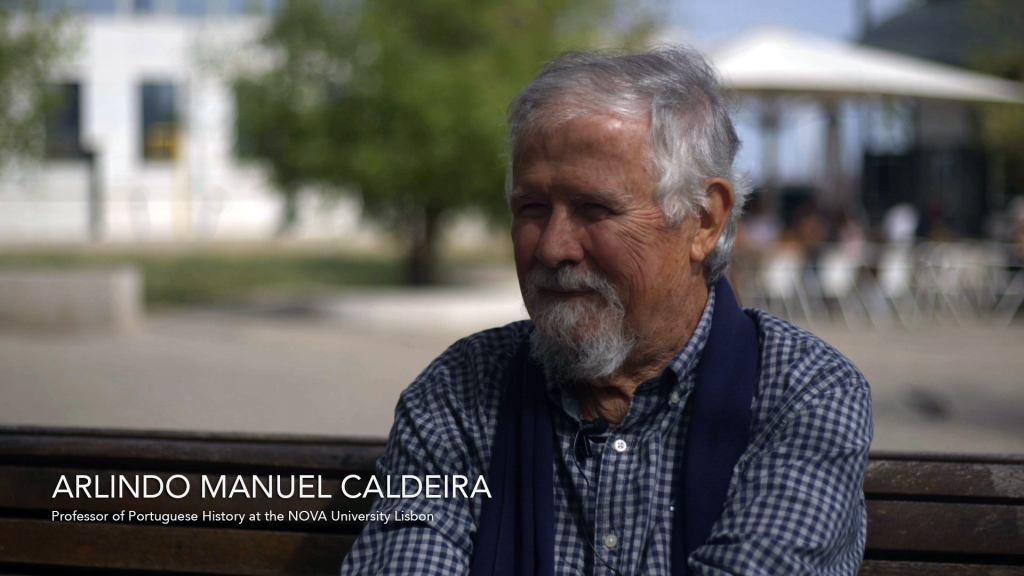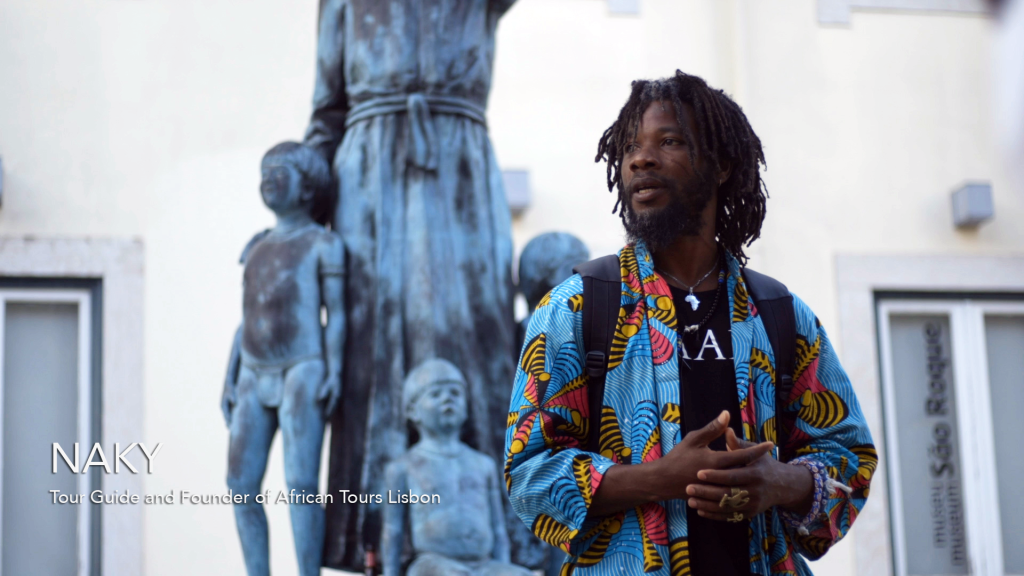Lisbon, The Expansion. © Arquitect Productions CIC
Background
With the capture and deportation of some 12.5 million African people, the Atlantic slave trade was likely the costliest in human life of all long-distance forced migrations. Academic and public engagement with the legacy of slavery and the Atlantic slave trade typically narrows its focus to the Americas. The fact that the trade had its roots in Portuguese exploration and was mostly directed to Iberia in the 15th and 16th centuries is generally overlooked.
Portugal’s entanglement with the slave trade is both complex and largely under-recognised – both within the country and internationally.
https://contestedlegaciesportugal.org/ is a digital archive of contested spaces in Portugal. It indicates sites of contested memory in cities in Portugal still haunted by the afterlife of slavery. The aim is to promote broader public engagement with the contested legacies of the slave trade in Portugal. This resource is also intended to enrich and complicate the debate over the legacy of colonialism and slavery, which has become increasingly more intense across Europe in recent years.

A Digital Archive of Contested Legacies:
The idea for the project originated in an encounter with three contested spaces in Lagos: a museum, a statue, and a mass grave.
Lagos: The Origins. © Arquitect Productions CIC.
Opened in 2016 on the site where the first groups of enslaved people are thought to have been shipped from West Africa to Portugal in 1444, not far from a statue from the period of Salazar’s dictatorship that celebrates Prince Henry, the main organiser of early Portuguese expeditions to West Africa, the Slave Market Museum in Lagos is the country’s only monument that openly addresses this aspect of Portugal’s history. The museum must be viewed in context of an unmarked mass grave just 550m away, which was excavated in 2009 during the construction of an underground car park and found to contain the remains of enslaved individuals. Barely publicised, the story has since been virtually silenced. Today, the grave remains hidden beneath a multi-story car park and a minigolf course – a literal infrastructure for white progress.
The archive makes available a large set of contents related to the core case study of the Slave Market Museum and the associated mass grave. It juxtaposes hitherto untranslated archival material with audio-visual materials that examine the trade’s continuing legacies. From there, its scope broadens to a more general exploration of sites in Portugal haunted by slavery’s afterlife. Particular attention will be given to Lisbon, the European city with the largest Afro-descendant population during the period.
The digital archive also serves as a space for grassroots engagement with individuals and organisations in Portuguese communities whose international recognition is limited.










A collaboration between the University of Oxford and EuroClio, developed in close conversation with the ongoing Contested Histories Initiative and based on original content conceptualised and implemented by filmmaker Arjuna Keshvani (Architect Productions CIC), the project ‘The Early Atlantic Slave Trade in Portugal: A Digital Archive of Contested Legacies’ is supported by the Knowledge Exchange Seed Fund of the University of Oxford and is directed by Professor Giuseppe Marcocci.
